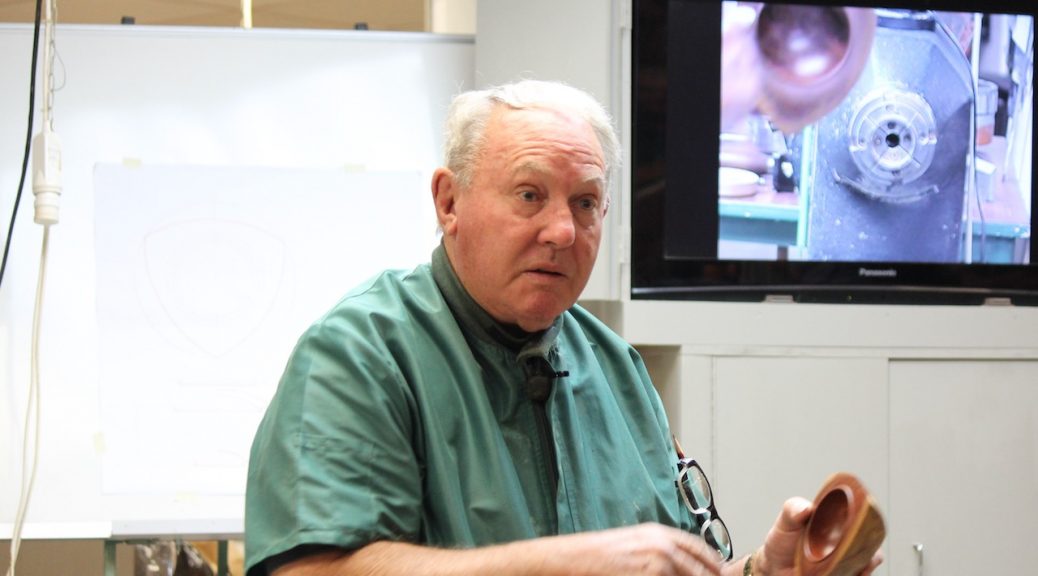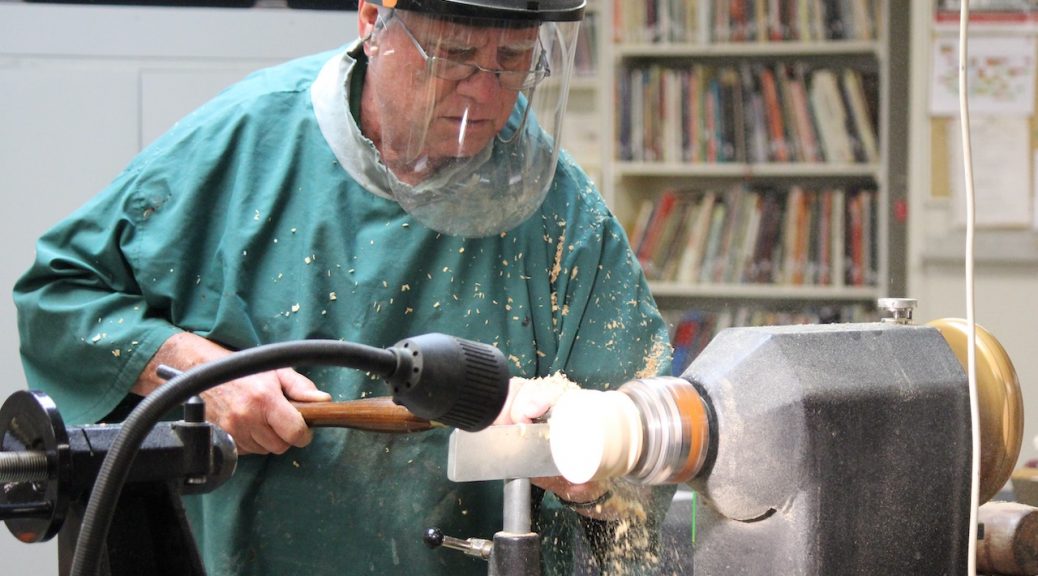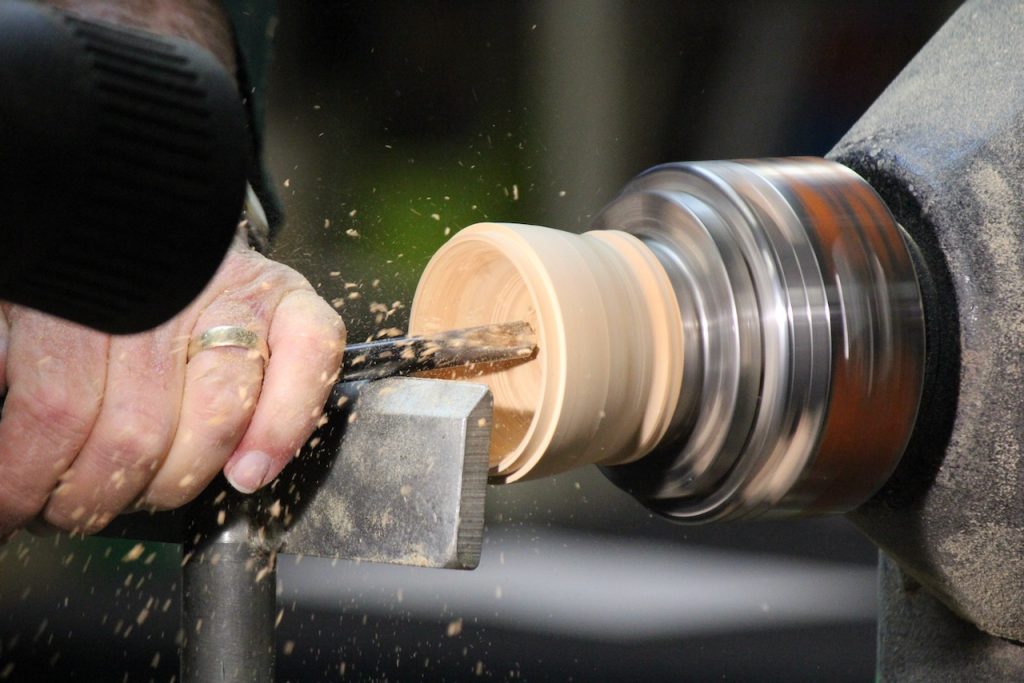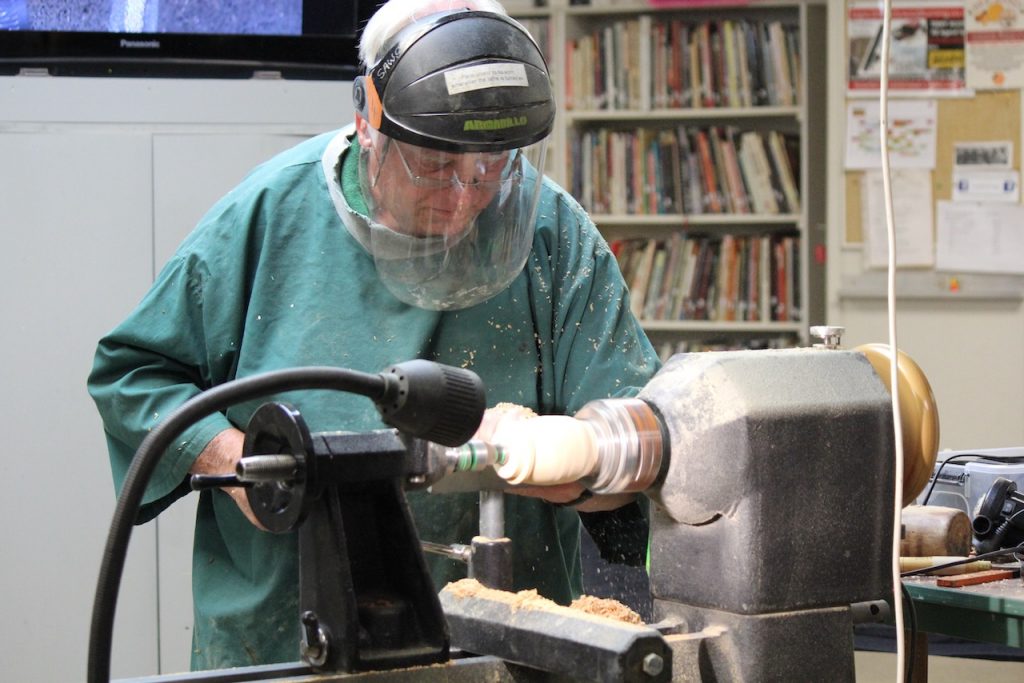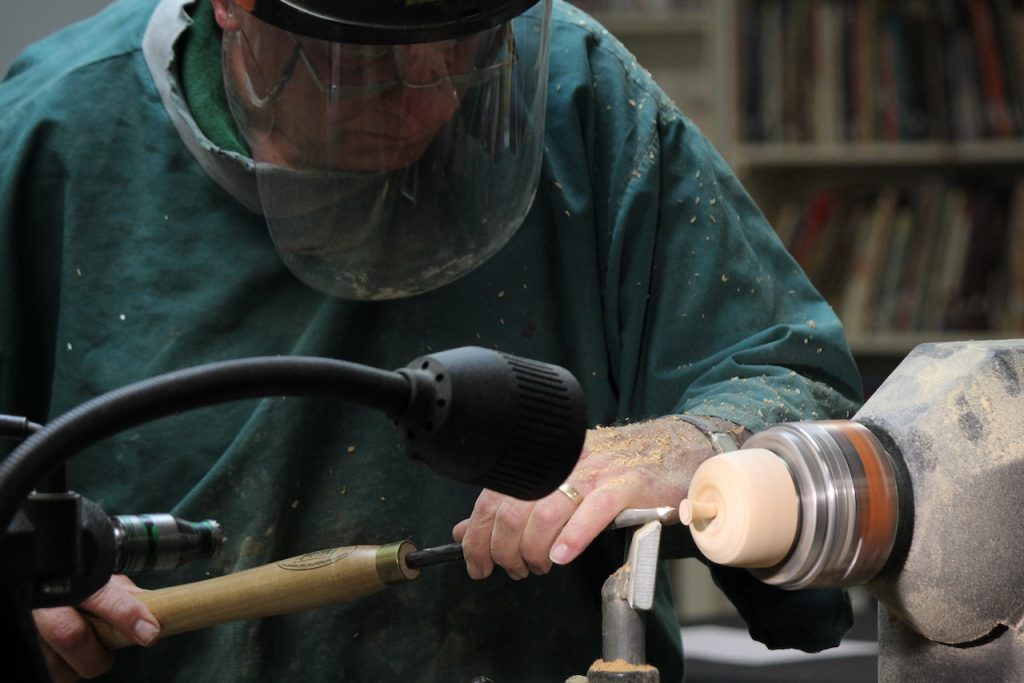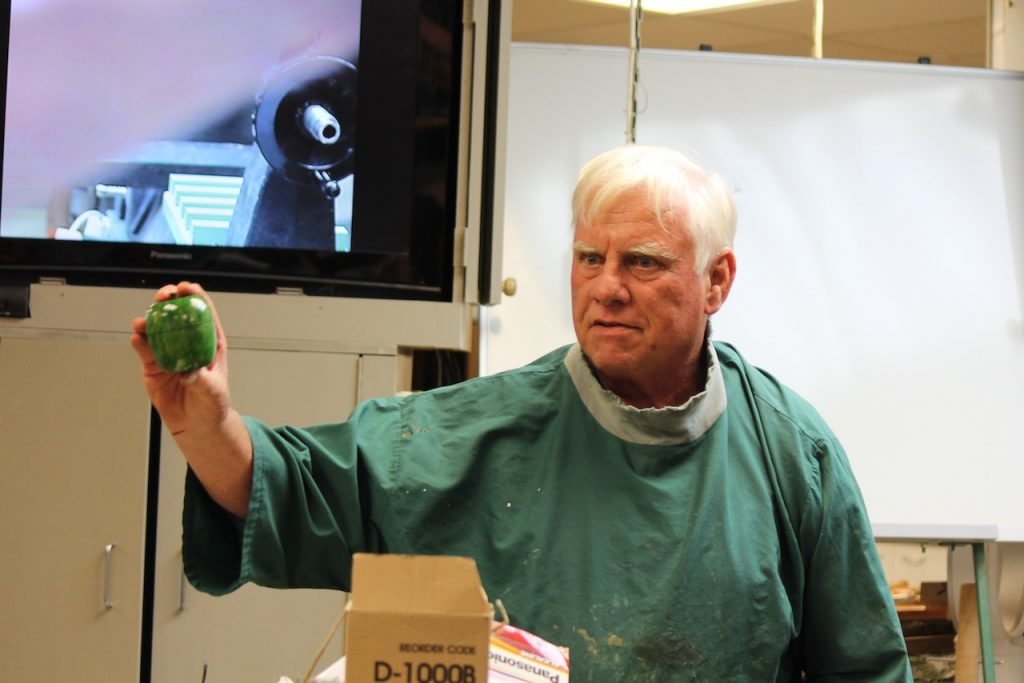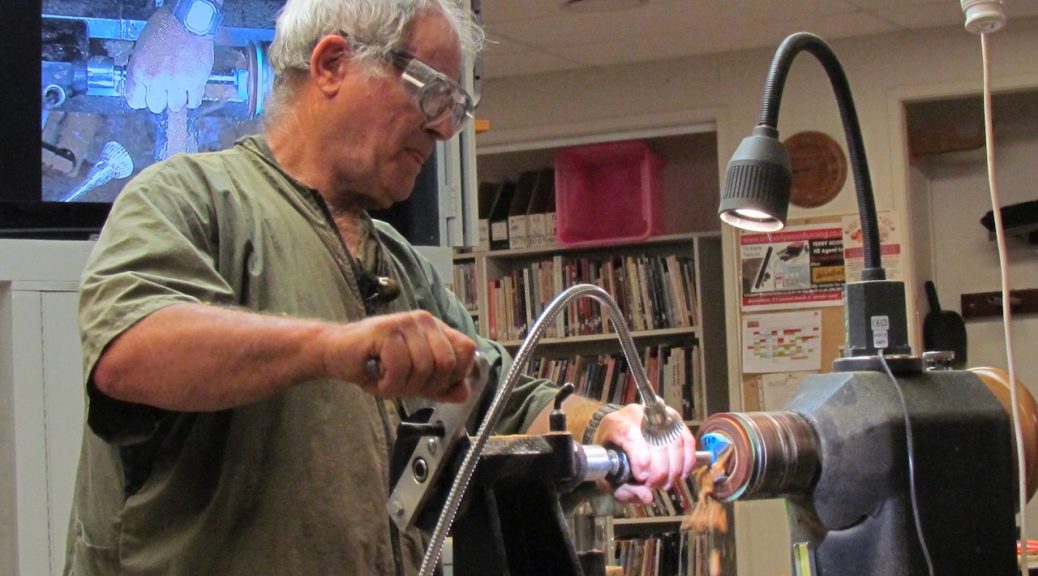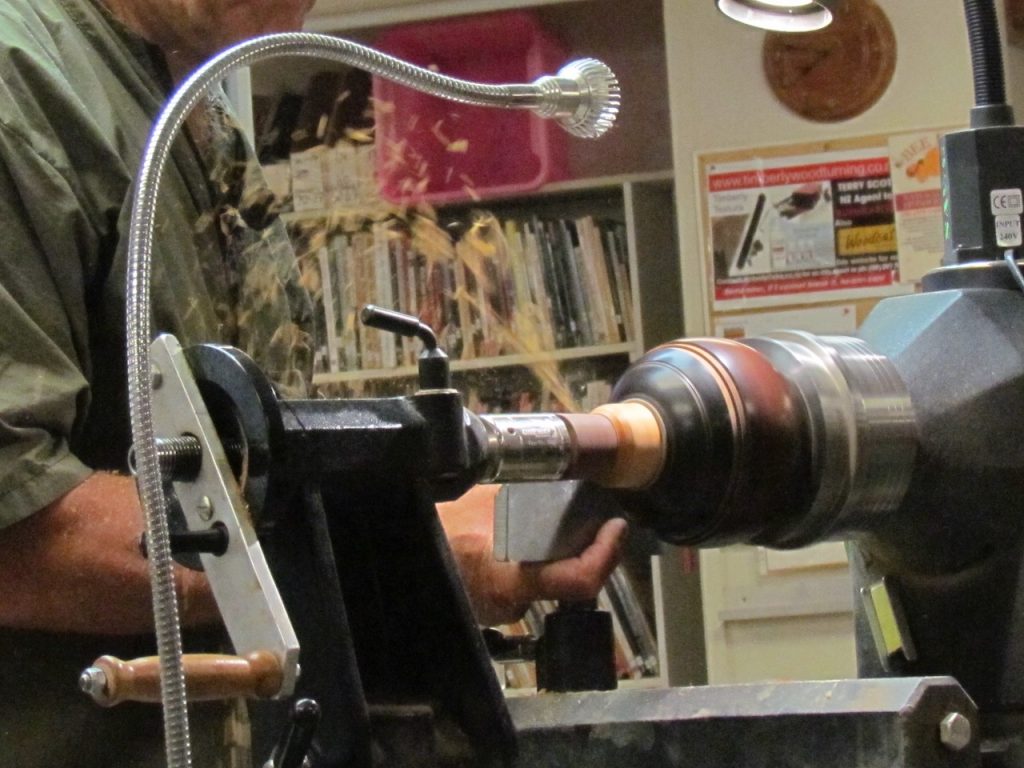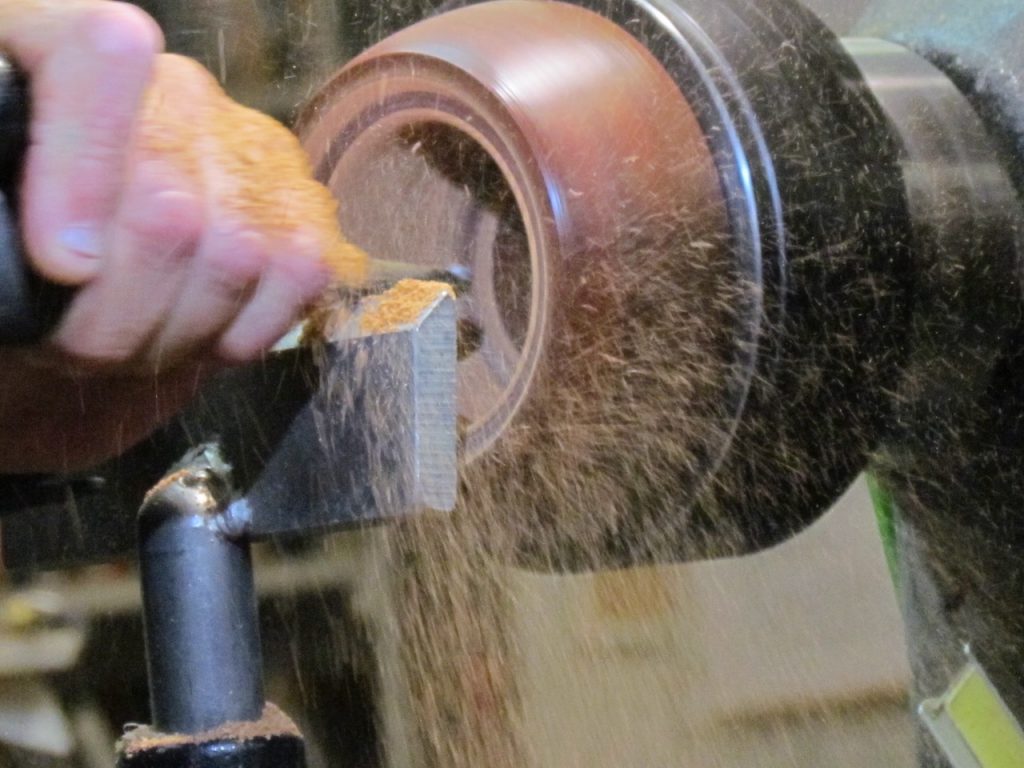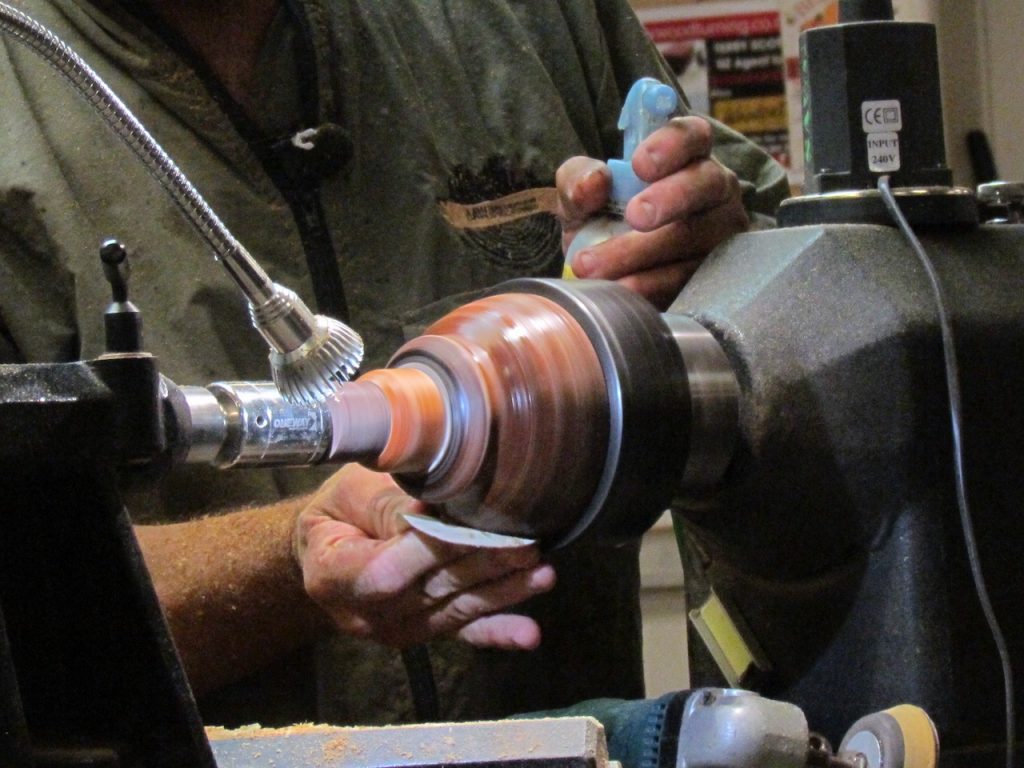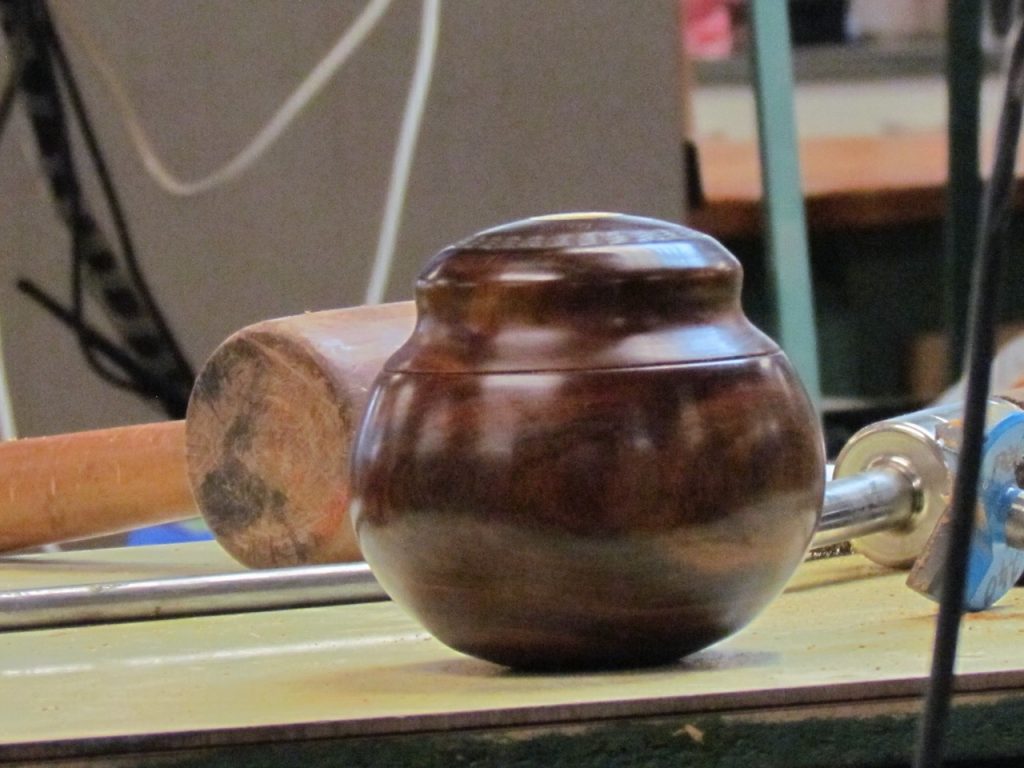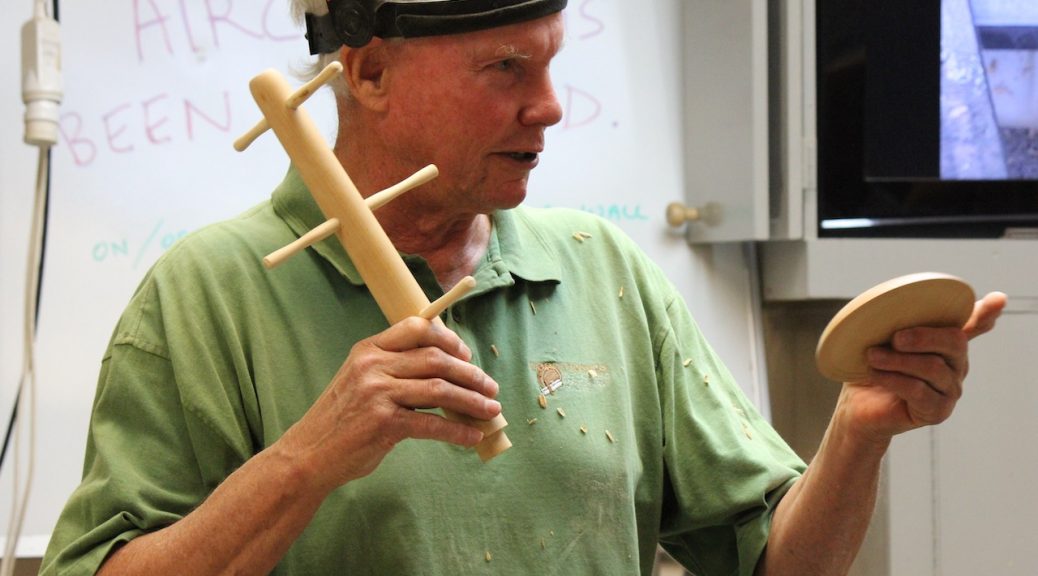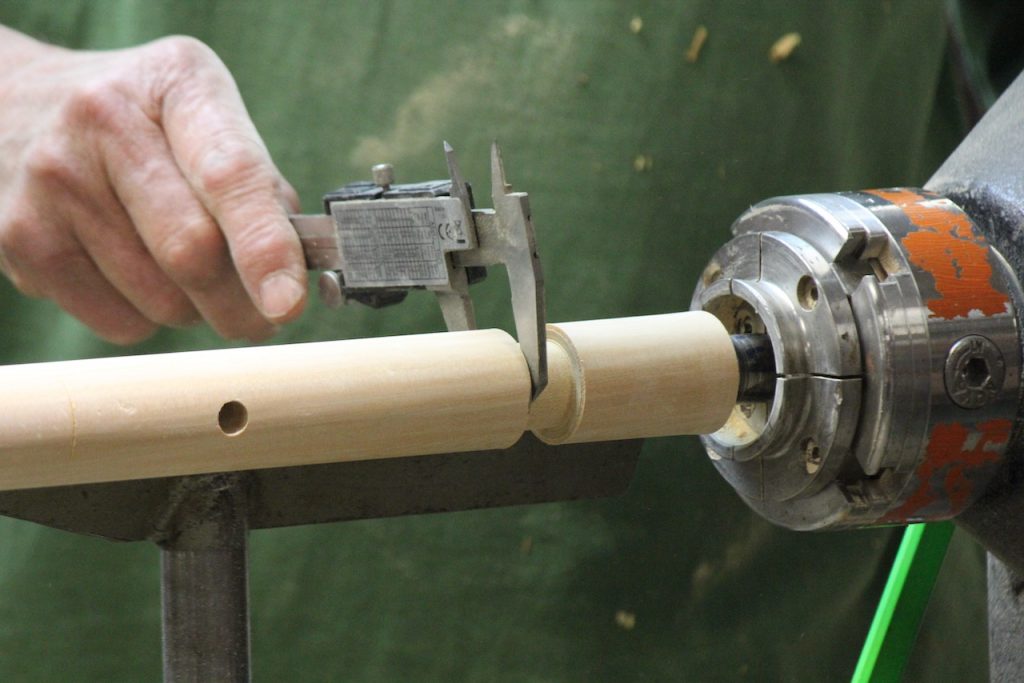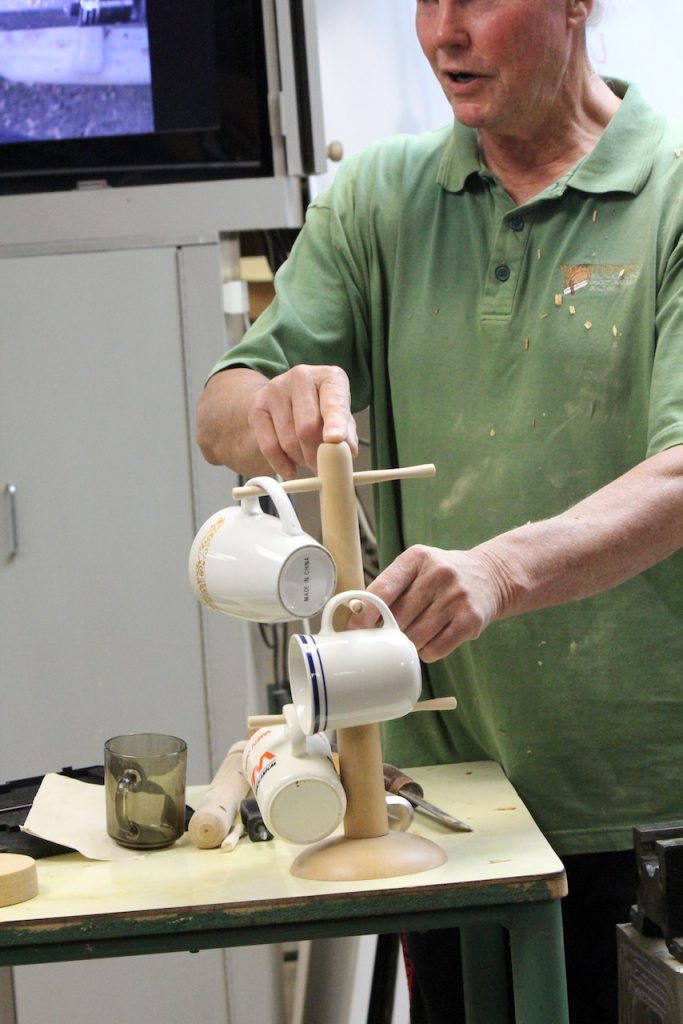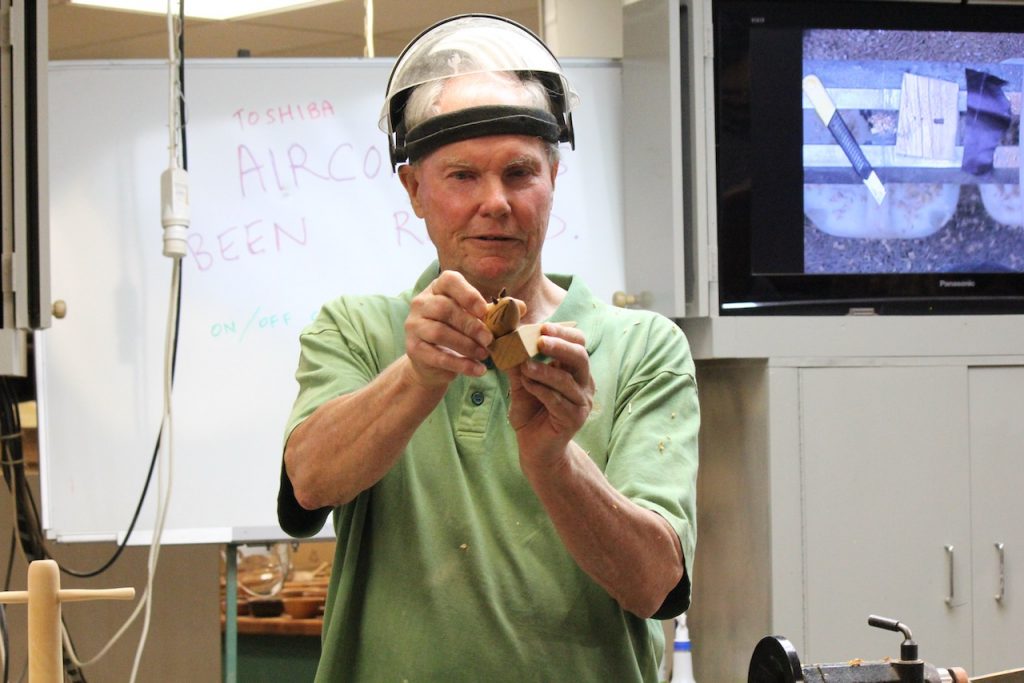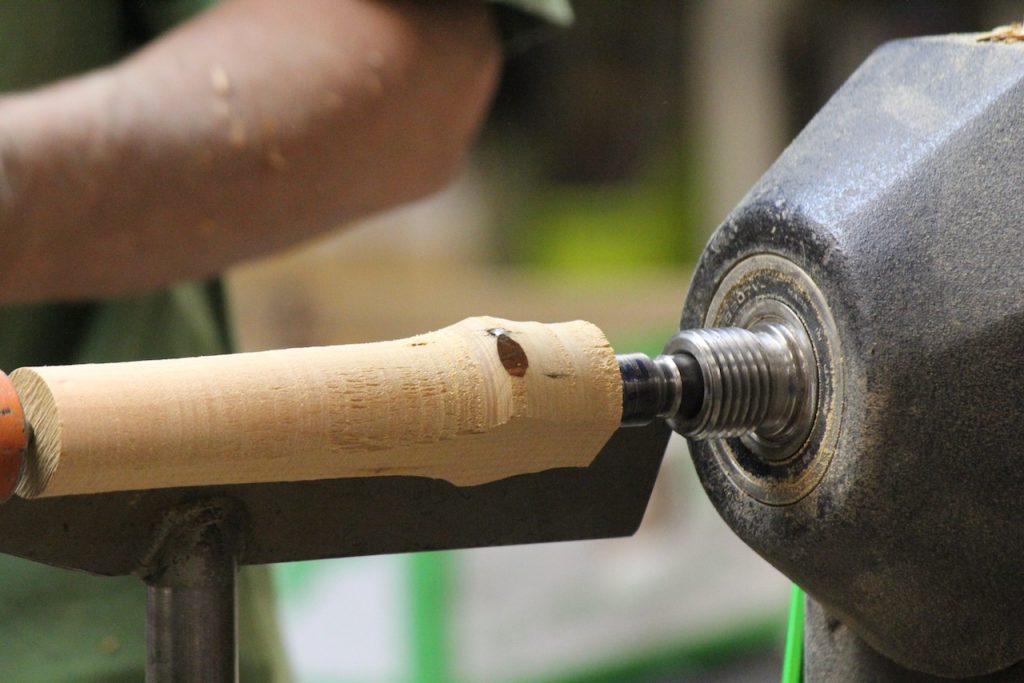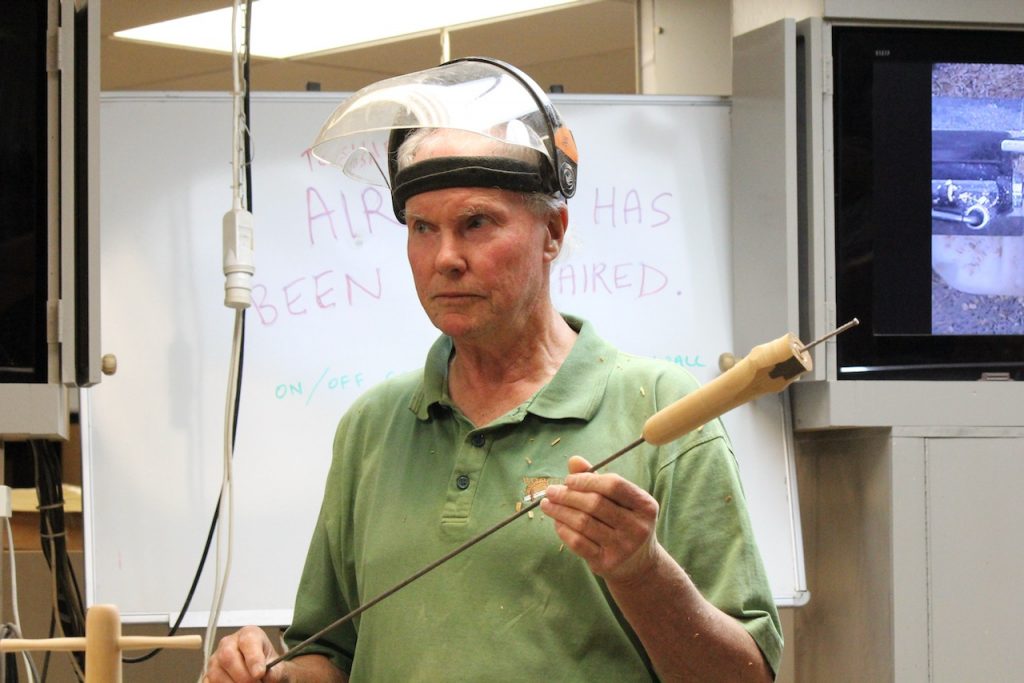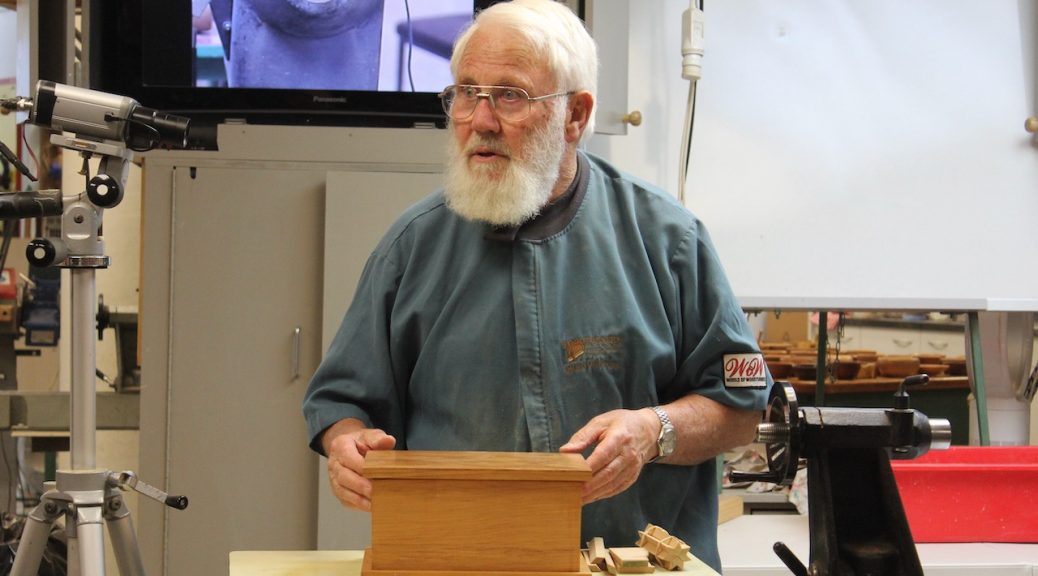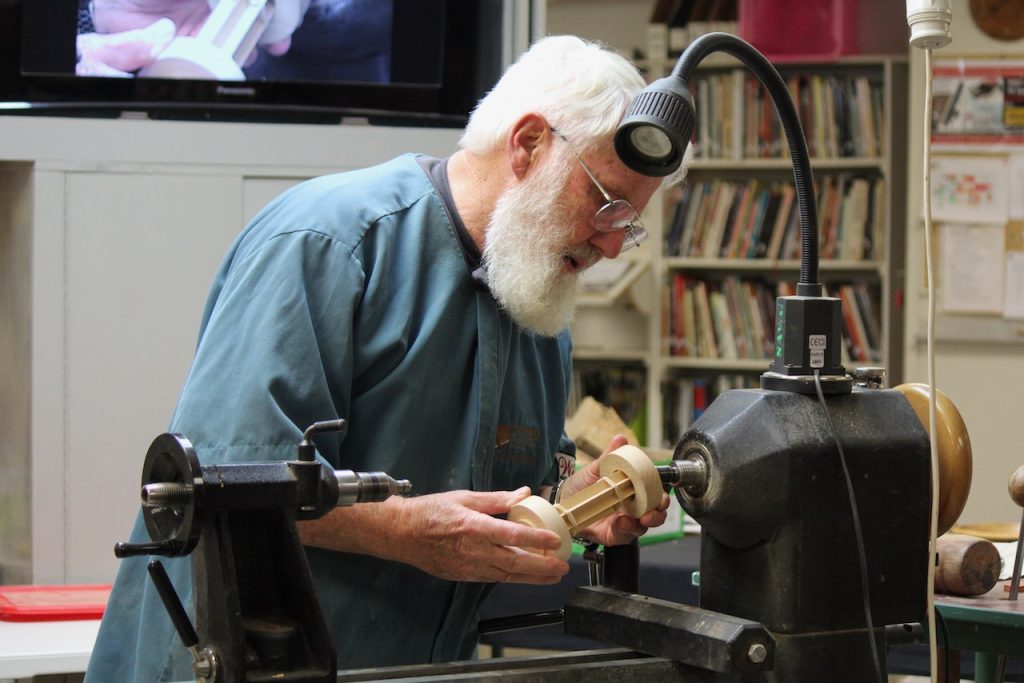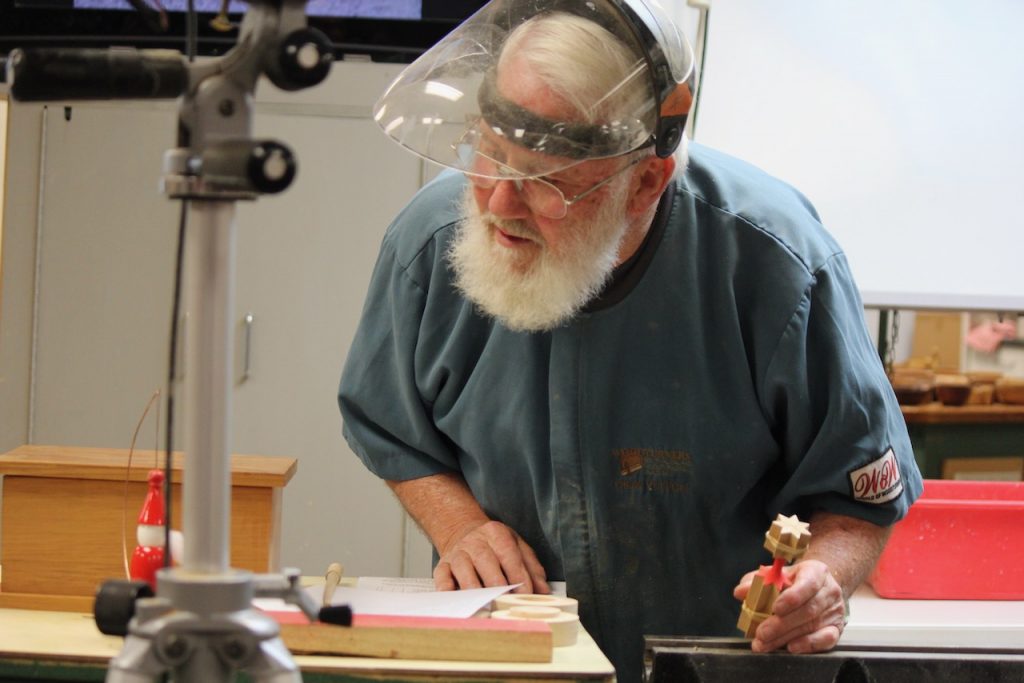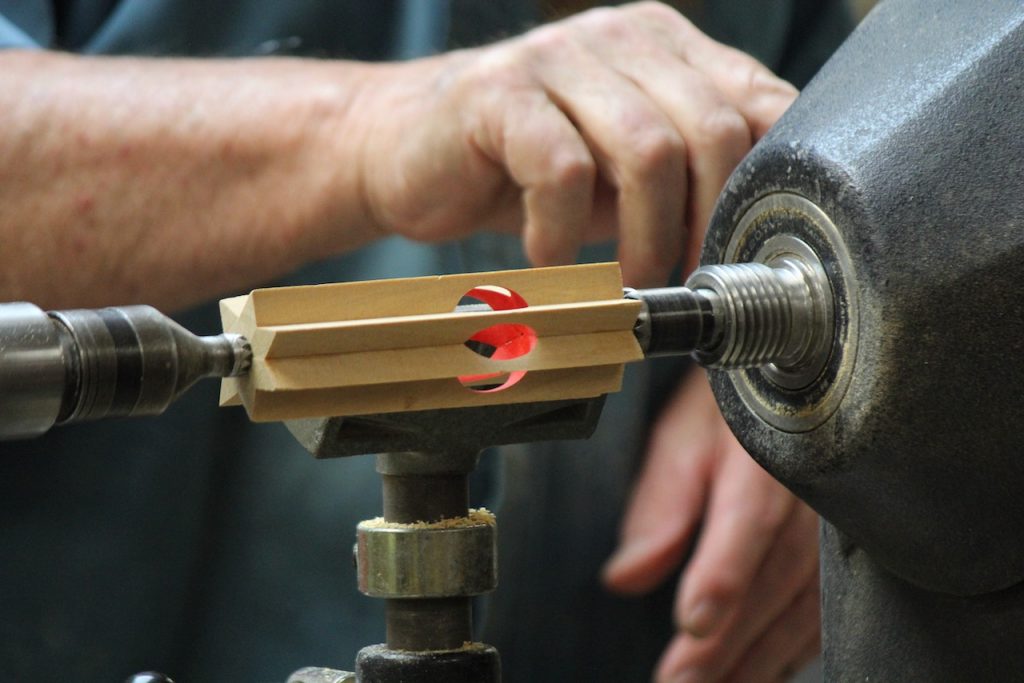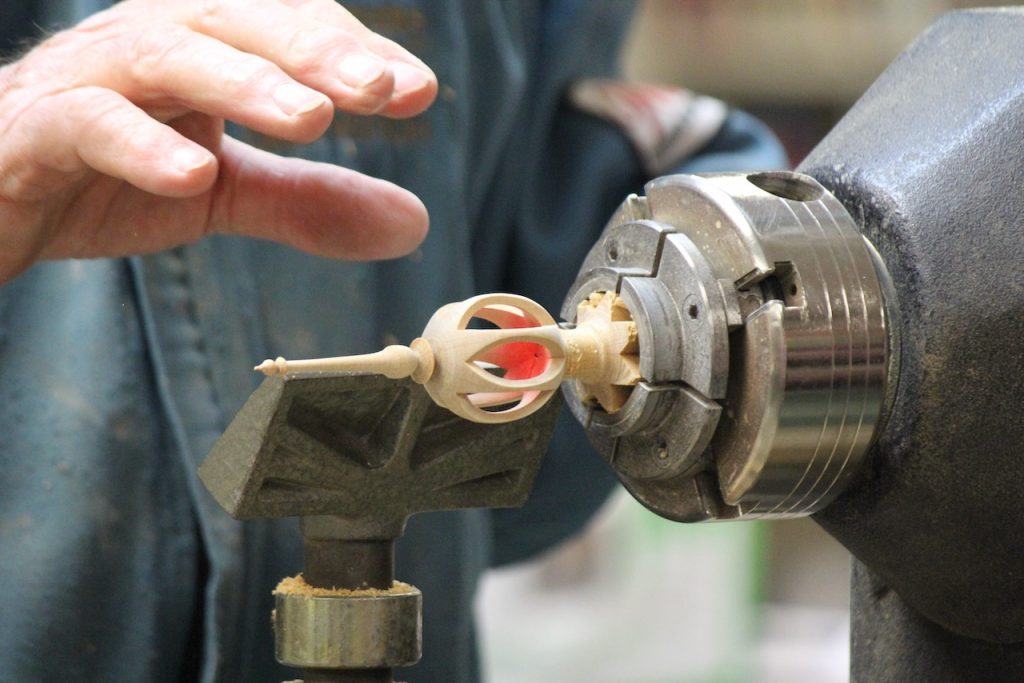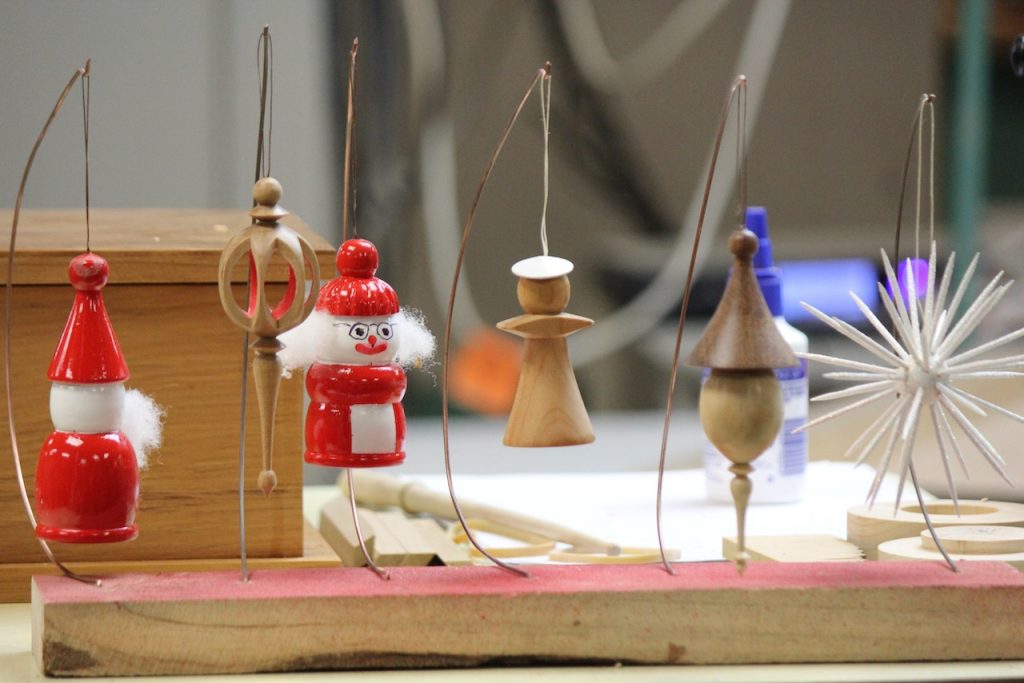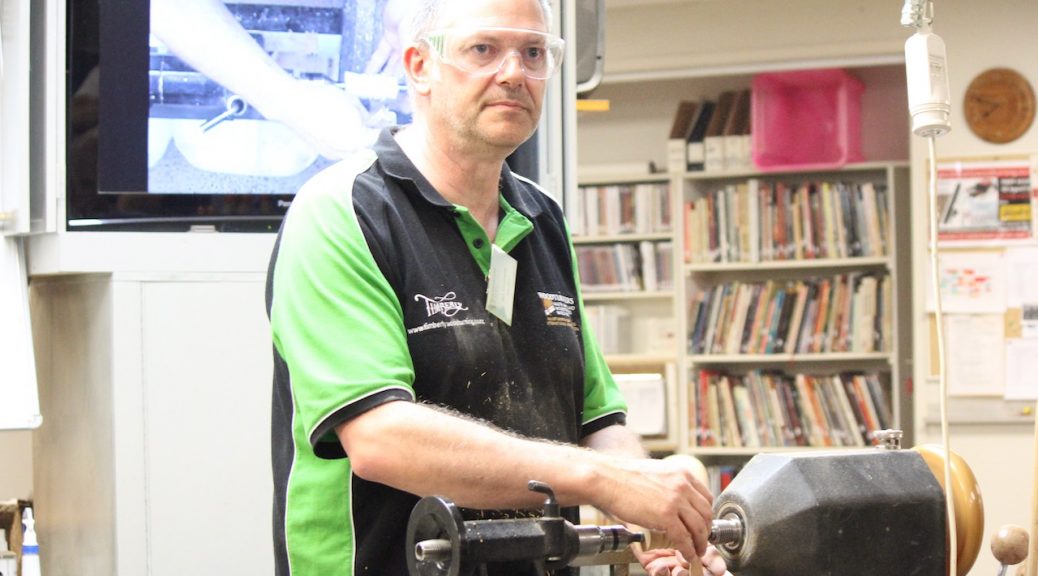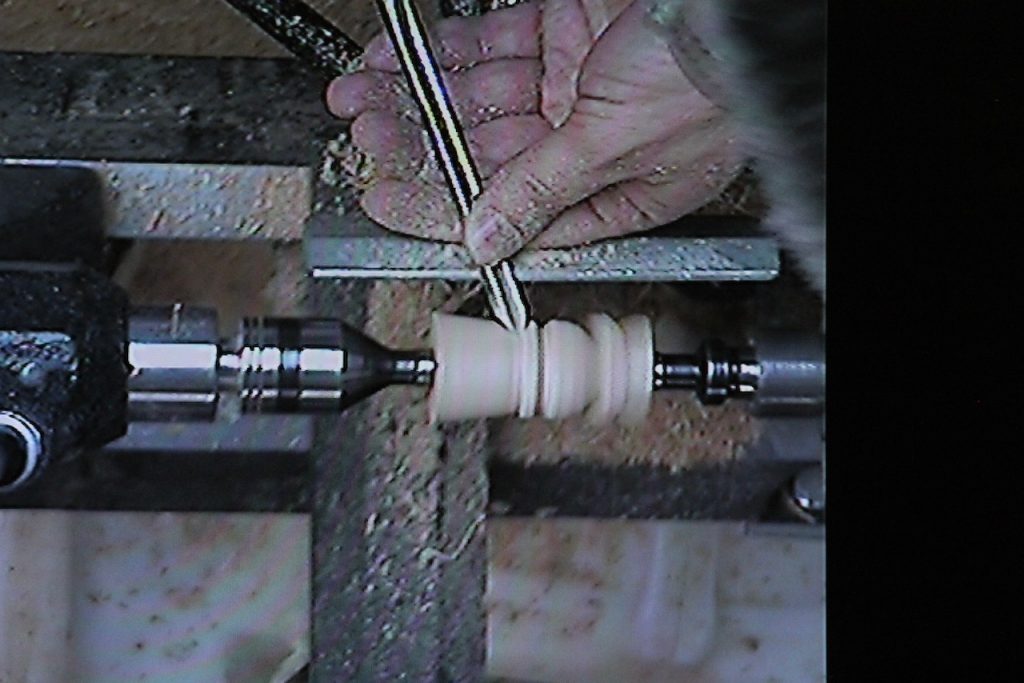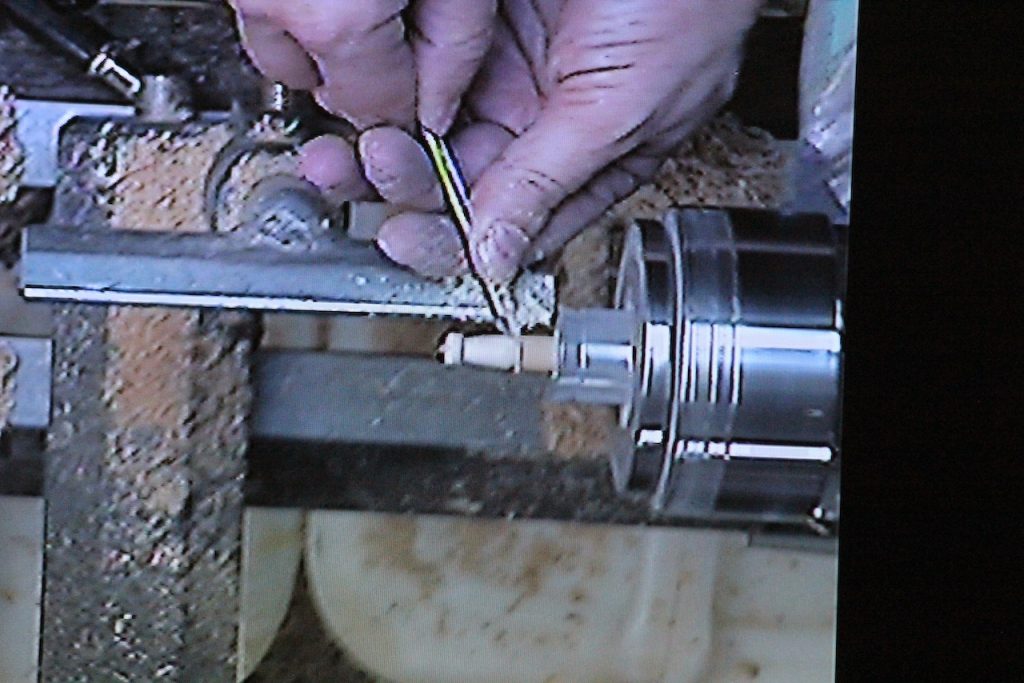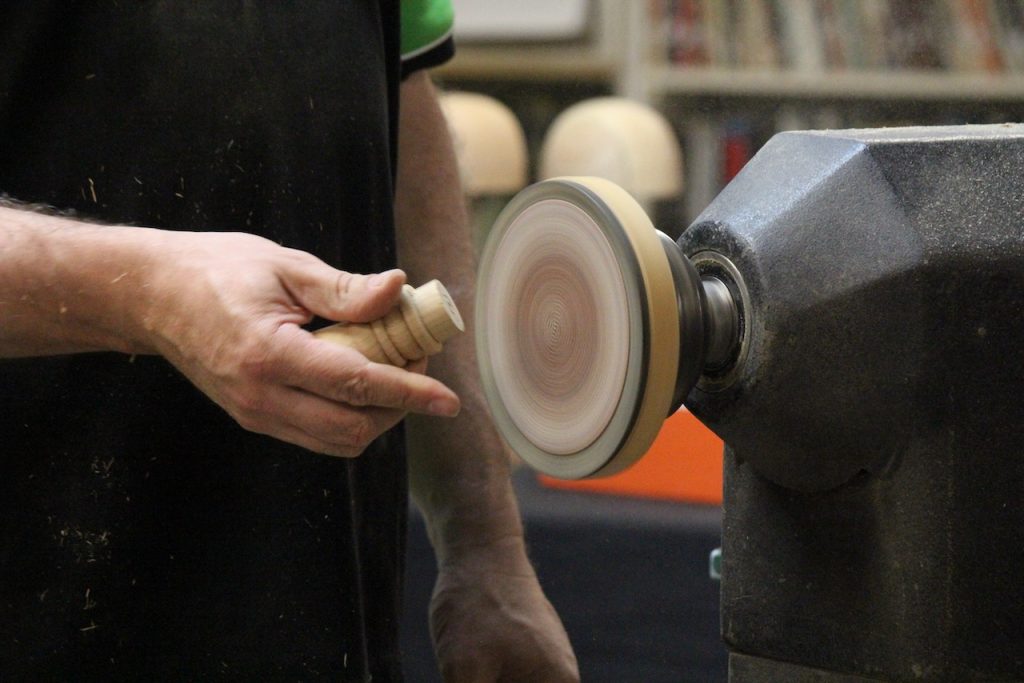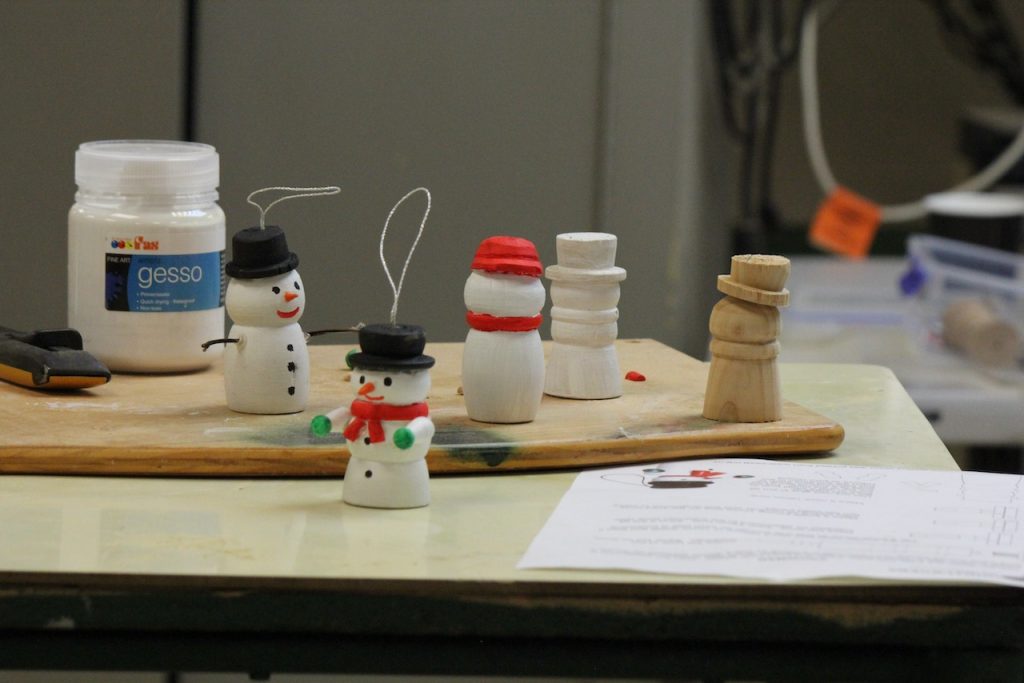Club Night: 12 Feb 2020
Report by: John Whitmore
Cam Cosford treated us to a demonstration of box making with a difference. The shape was of triangular footprint but having convex (not straight) sides. The complexities of this were somewhat baffling to many and way beyond the scope of this report to record in detail, but there were some take home messages that are worth recording for posterity:
The project was made from a blank of 150 mm dia and 80 mm long – which gives a good idea of the overall size. This can be scaled either way for personal preference.
When removing and replacing a project on a 4 jaw chuck in compression mode, mark the work opposite a known jaw number so that the item is remounted exactly as it was first positioned, using the original pressure marks. This facilitates consistently true running.
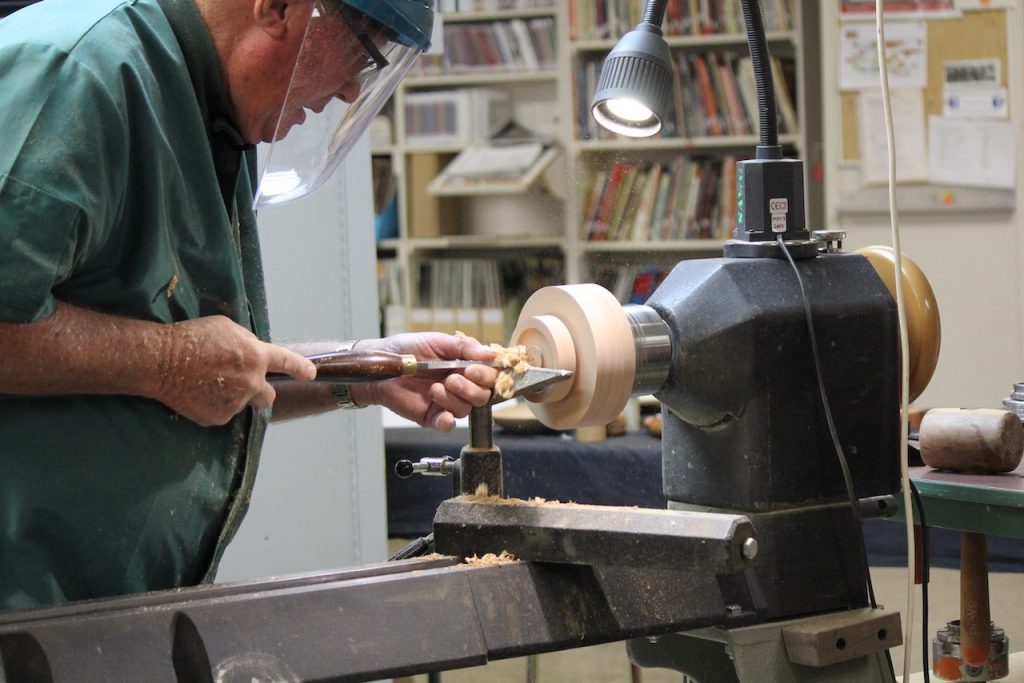
Parting off a box lid is best started using the thinnest parting tool available and completed by hand saw with the work stationary. A thin parting tool enables grain to be better matched between box and lid.
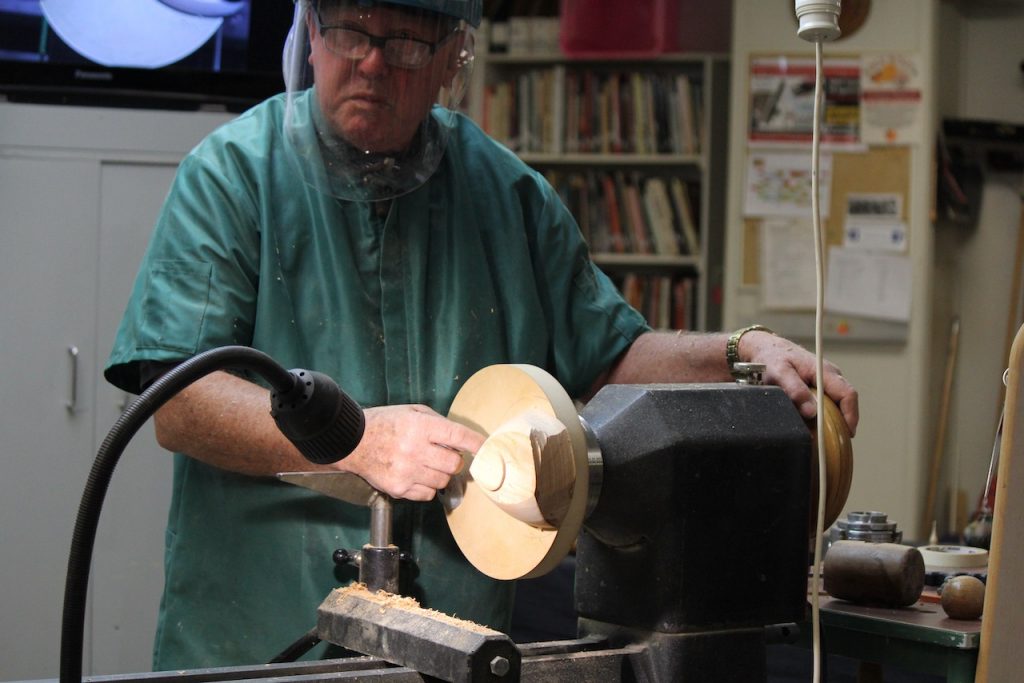
Marking out the design intentions involves careful geometric drawing. To create a triangle out of the original circular disc requires offset turning and a great deal of hit-and-miss cutting. Off-setting is by means of a custom faceplate made from 30 mm mdf and necessitates very accurate (again, of geometric quality) laying out of positioning marks. Securing of the work to the offset faceplate is assisted by means of a screw into the workpiece centre to allow rotation between the three cutting centres and blobs of hotmelt glue for security at each stop. A counterbalance weight is essential.
The feet were cunningly made by utilising the original flat base of the blank as their resting surfaces and shaping the sides via the process of creating the convex triangular curves. Unusually, the underside was deeply dished between the feet with the effect of letting light underneath to create lift of the box and visual separation of the feet.
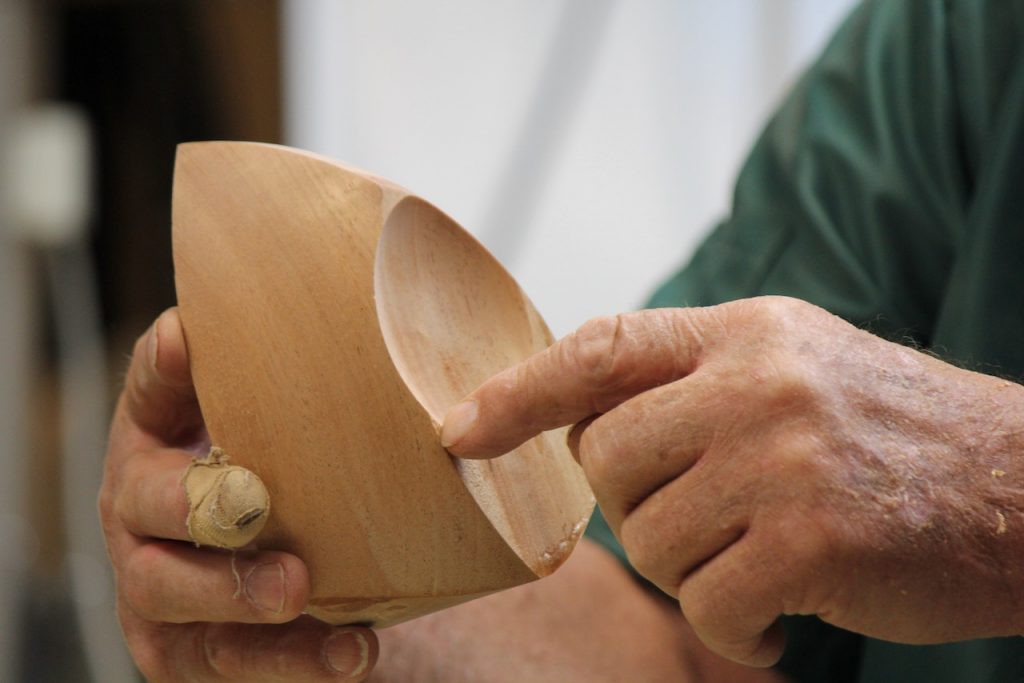
The likelihood is that this will be written up as a project plan for our website so greater detail is expected in due course along with drawings to illustrate the finer points. This project does flag the benefits of precision planning and that there are endless permutations in woodturning to be explored and experimented with.
